How to Grow Spaghetti Squash: Your Thriving Garden Guide 2025
- March 15, 2024
- 0 comment
Learn How to Grow Spaghetti Squash in your garden with our guide, covering everything from seed selection to harvest, and enjoy the unique, pasta-like vegetable in your meals. Spaghetti squash, scientifically known as Cucurbita pepo, is a unique and versatile vegetable prized for its stringy, pasta-like flesh. Growing spaghetti squash in your garden can be a rewarding experience, offering a bountiful harvest perfect for a range of culinary delights. This guide will walk you through the process of growing spaghetti squash, from seed selection to harvest.
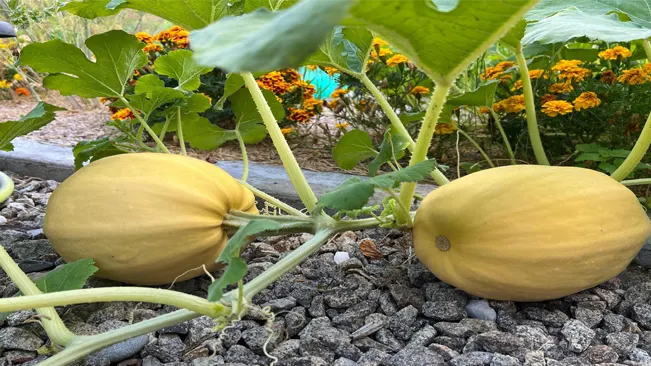
Health Benefits of Spaghetti Squash
| Benefit | Description |
|---|---|
| Low in Calories | Spaghetti squash is much lower in calories than traditional pasta, making it a great option for weight management or a low-calorie diet. |
| Nutrient-Rich | It contains essential nutrients like vitamin C, manganese, and vitamin B6, contributing to overall health. |
| High in Fiber | The high fiber content aids in digestion and helps in maintaining a healthy gut. It also contributes to feeling full, which can aid in weight control. |
| Low in Carbohydrates | Ideal for those on a low-carb or ketogenic diet, as it is significantly lower in carbs compared to regular pasta. |
| Gluten-Free | A perfect alternative for those with gluten intolerance or celiac disease. |
| Versatile in Cooking | Can be baked, boiled, steamed, or microwaved, and used in a variety of dishes from salads to main courses. |
| Antioxidant Properties | Contains antioxidants like beta carotene and vitamin C, which help fight free radicals and reduce oxidative stress. |
| Supports Heart Health | The fiber and potassium in spaghetti squash can contribute to cardiovascular health by helping to lower blood pressure and cholesterol levels. |
| Good for Diabetics | Its low glycemic index means it has a minimal impact on blood sugar levels, making it suitable for people with diabetes. |
| Easy to Prepare and Store | Can be easily cooked and stored for use in various dishes, making it a convenient food item for meal planning. |
List on How To Grow Spaghetti Squash
Choosing the Right Seeds
Start by selecting high-quality spaghetti squash seeds from a reputable source. Consider the climate and space in your garden when choosing a variety. Some popular varieties include ‘Vegetable Spaghetti’, ‘Tivoli’, and ‘Orangetti’.
Choosing High-Quality Spaghetti Squash Seeds
- Source: Ensure that you buy seeds from a reputable source. This could be a well-known garden center, a specialized seed company, or a trusted online retailer. Quality seeds have a higher germination rate and are more likely to produce healthy, robust plants.
- Seed Viability: Check the packaging for the seed’s viability and expiration date. Seeds lose viability over time, so fresher seeds usually guarantee better germination.
- Disease Resistance: Look for varieties that are known to be resistant to common diseases that affect squash plants, like powdery mildew or squash vine borers. This information is often mentioned on the seed packet or the seller’s description.
Considering Climate and Space
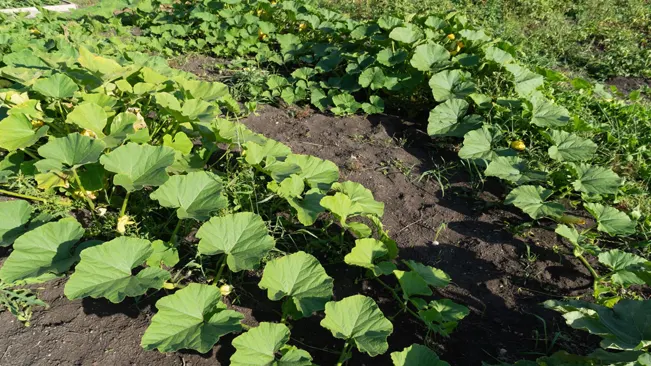
- Climate Adaptability: Different varieties of spaghetti squash have varying tolerances to climate conditions. Some may be more suited to cooler climates, while others thrive in warmer areas. Always choose a variety that is well-suited to the climate in your region.
- Garden Space: Spaghetti squash plants can be quite large and need ample space to grow. If you have limited space, look for bush varieties or those that can be grown vertically on a trellis.
Popular Varieties of Spaghetti Squash
Vegetable Spaghetti
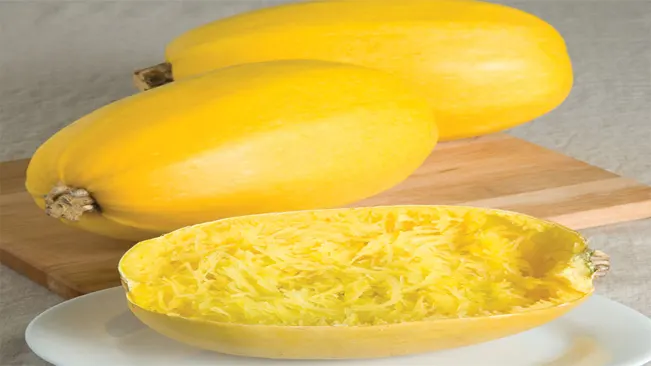
- This is the classic variety that most people are familiar with. It has a medium to large size and yields a good amount of spaghetti-like strands. It’s best suited for a temperate climate and requires a moderate amount of space.
Tivoli
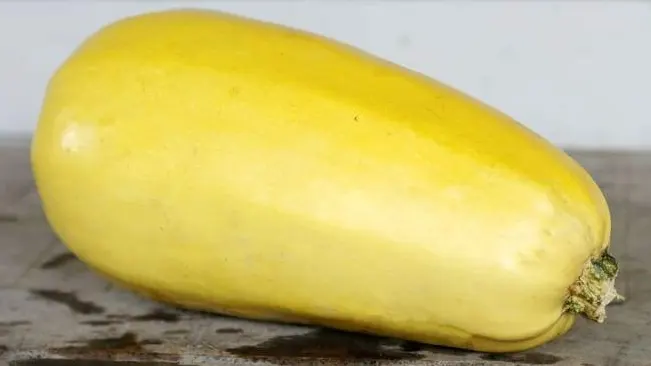
- This variety is a bush type, making it suitable for smaller gardens or even large containers. It has a compact growth habit but still produces a generous yield. The ‘Tivoli’ is known for its excellent flavor and texture.
Orangetti
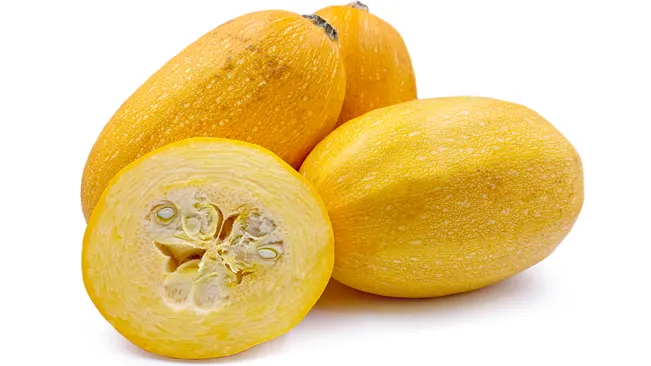
- A unique variety, ‘Orangetti’ is known for its distinctive orange flesh, unlike the typical yellow of other spaghetti squashes. It has a slightly sweeter taste and is rich in beta-carotene. This variety is great for adding color to dishes and is also suitable for a wide range of climates.
Planting
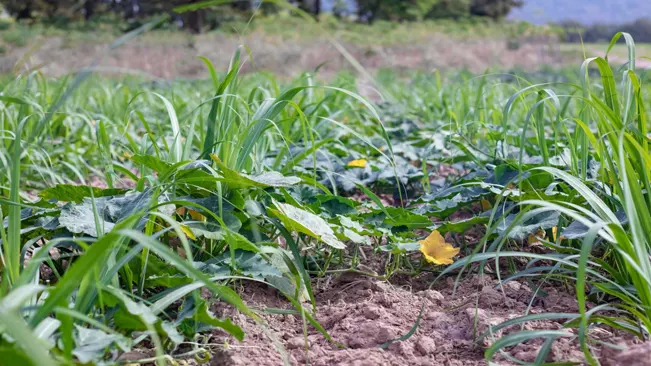
Timeframe
- Importance of Timing: Planting after the last frost is crucial because spaghetti squash is sensitive to cold. Frost can damage or kill young seedlings.
- Soil Temperature: Ensuring the soil is at least 60°F (15°C) is key for seed germination. Cooler soil can significantly delay or inhibit germination.
- Seasonal Consideration: Depending on your geographical location, the right time to plant can vary. In most temperate regions, this usually falls around late spring.
Soil Preparation
- Selecting the Right Location: Spaghetti squash plants thrive in full sun, meaning they need at least 6 to 8 hours of sunlight daily.
- Soil Drainage: Well-draining soil prevents waterlogging, which can lead to root rot. If you have heavy clay soil, consider raising your beds to improve drainage.
- Soil Fertility: Amending the soil with compost or well-rotted manure enriches it with nutrients essential for plant growth. This step is particularly important as squash plants are heavy feeders.
- pH Level Consideration: Spaghetti squash prefers a soil pH between 6.0 and 6.8. If necessary, test your soil pH and adjust it accordingly.
Sowing Seeds
- Depth and Spacing: Planting seeds 1 inch deep helps in optimal germination. Proper spacing, about 2 to 3 feet apart, is essential for adequate air circulation and growth.
- Row Arrangement: If you’re planting multiple rows, space the rows about 4 to 6 feet apart to provide room for vine growth.
- Trellising in Small Gardens: In limited spaces, trellising is a great option. It helps in vertical growth, saving ground space, and also aids in keeping the fruits off the ground, reducing the risk of rot and pest infestation.
- Watering After Planting: Once you sow the seeds, water the soil thoroughly. Consistent moisture is crucial until germination, which typically occurs in 7-14 days.
Care and Maintenance
Watering

- Consistent Moisture: Spaghetti squash plants thrive with steady moisture levels. Inconsistent watering can lead to issues like blossom end rot or irregular fruit development.
- Deep Watering Technique: It’s essential to water deeply, which means ensuring the water reaches the deep roots of the plants. This encourages the roots to grow deeper into the soil, providing better stability and nutrient uptake.
- Frequency: Typically, watering once a week is sufficient, but this can vary based on climate and soil type. In hotter, dryer climates, more frequent watering may be necessary.
- Avoiding Foliage: Keeping the leaves dry helps prevent fungal diseases like powdery mildew. Water early in the morning so any water on the leaves can dry quickly with the sun.
Fertilization
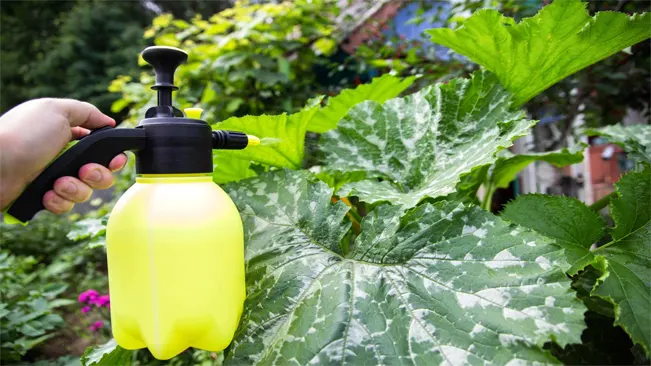
- Balanced Fertilizer: A balanced fertilizer (like a 10-10-10 NPK) is ideal for spaghetti squash. NPK stands for nitrogen, phosphorus, and potassium, which are the key nutrients that plants need.
- Application Schedule: Applying fertilizer every four weeks is a general guideline, but monitoring plant growth and soil health can help you adjust this schedule. Over-fertilization can be as harmful as under-fertilization.
- Following Instructions: Always adhere to the package’s instructions to avoid damaging the plants.
Mulching
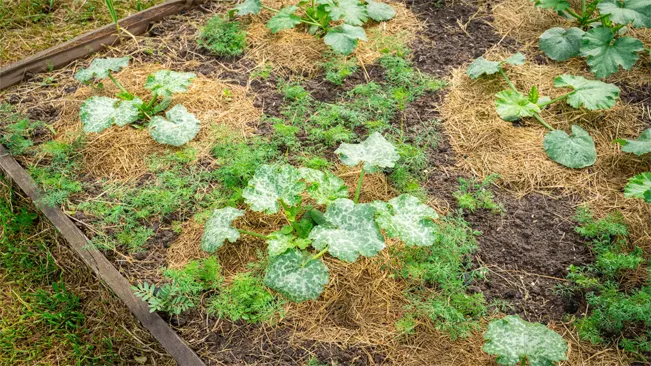
- Types of Organic Mulch: Straw, grass clippings, or shredded leaves are excellent choices. They gradually break down and add nutrients to the soil.
- Benefits: Mulch helps retain soil moisture, keeps roots cooler in summer, and warmer in early fall. It also suppresses weed growth, which competes with the squash plants for nutrients.
- Application: Apply a layer of mulch around the base of the plants, but not directly against the stems to avoid rot.
Pest and Disease Management
- Common Pests: Squash bugs and cucumber beetles are particularly problematic. They can damage leaves and fruits and may also transmit diseases.
- Organic Pest Control: Using organic insecticides like neem oil or insecticidal soap can help control these pests without harming beneficial insects.
- Crop Rotation: Rotating your crops annually reduces the buildup of pests and diseases in the soil. Avoid planting squash in the same spot every year.
- Monitoring and Early Intervention: Regularly check your plants for signs of pests or disease. Early detection is key to effective control.
Pollination
Spaghetti squash plants have both male and female flowers. Hand pollination can be done to ensure a good harvest if there is a lack of pollinator activity.
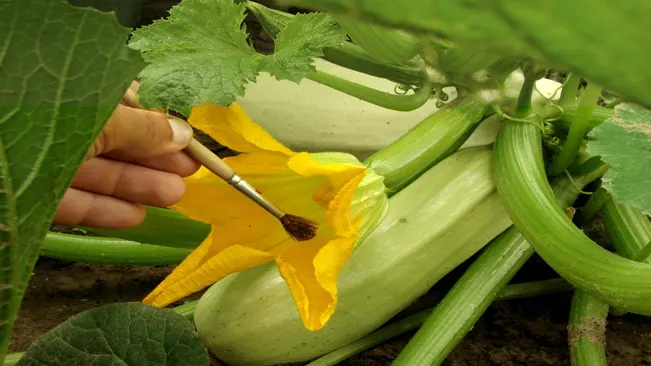
Identification of Male and Female Flowers:
- Male Flowers: They typically appear first on the plant. These flowers are on long, thin stems and contain a stamen that produces pollen.
- Female Flowers: These emerge slightly later and are identifiable by the small, immature squash at the base of the flower. The center of the female flower has a stigma, which is where the pollen needs to be deposited for fertilization.
Natural Pollination
- In a natural setting, pollination occurs with the help of bees and other pollinating insects. They transfer pollen from the male flowers to the female flowers as they move between them. However, in some cases, especially in urban gardens or greenhouses, the natural pollinator population might be insufficient.
Hand Pollination
If natural pollination is lacking, hand pollination can be a reliable alternative. Here’s how you can do it:
- Identify the Flowers: In the morning, when the flowers are open, identify a male and a female flower.
- Collect Pollen: Gently pluck a male flower and remove its petals to expose the pollen-covered stamen.
- Pollinate: Brush the stamen against the center of the female flower, ensuring that the pollen makes contact with the stigma.
Harvesting
Timing
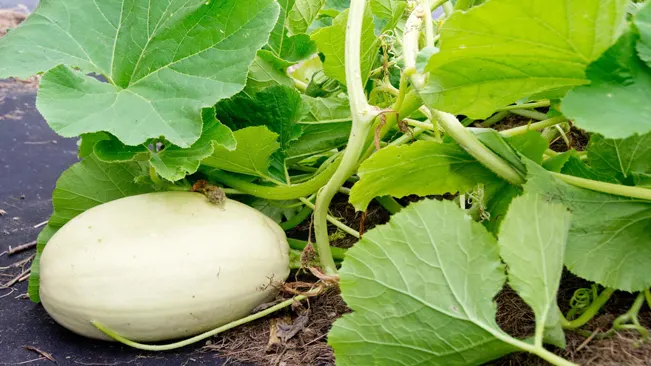
- The ideal time to harvest spaghetti squash is crucial for optimal flavor and storage.
- Typically, it takes around 100 days after planting for spaghetti squash to mature.
- The key indicator of maturity is the hardening of the rind and a change in color to a deep yellow or orange, depending on the variety.
- It’s also helpful to note that the vine itself may start to wither when the squash is ready for harvest.
- A simple test is to try and pierce the skin with your fingernail; if it resists, it’s likely ready.
Method

- When it comes to the method of harvesting, careful handling is important to prevent damage.
- Use a sharp knife or pruning shears to cut the squash from the vine. It’s important to leave a few inches of stem attached to the squash. This stem acts as a barrier to prevent bacteria and fungi from entering the squash, which can lead to quicker spoilage.
- Avoid holding the squash by the stem, as a heavy squash can break off and damage the area where the stem joins the fruit, leading to quicker decay.
Storage
Store cured spaghetti squash in a cool, dry place. Properly stored spaghetti squash can last several months.
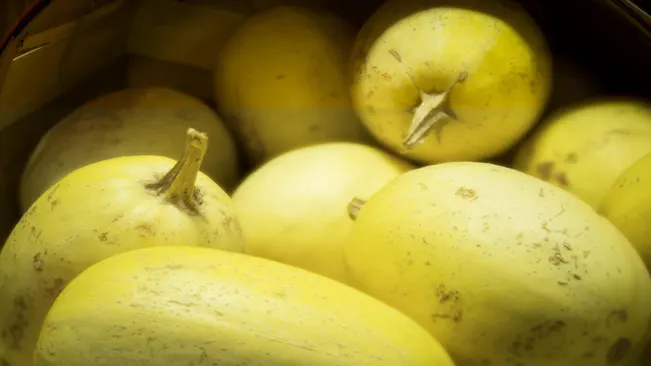
- Curing Process:
- Before storing, it’s important to cure the spaghetti squash. This involves leaving the squash in a warm, sunny spot (like a windowsill or a covered porch) for about 7 to 10 days.
- Curing hardens the skin, heals any cuts or bruises, and enhances the storage life.
- Select the Right Location:
- Choose a cool (about 50-55°F or 10-13°C), dry place for storage.
- Basements, cellars, or a pantry can be ideal. Avoid places where temperatures fluctuate or are too damp.
- Avoid Sunlight and Moisture:
- Direct sunlight can lead to degradation of the squash.
- Excess moisture can promote mold growth. Ensure the storage area is well-ventilated to prevent this.
- Proper Arrangement:
- Do not stack spaghetti squash on top of each other as this can promote rotting. Keep them in a single layer, ensuring they do not touch each other.
- Use shelves or racks for better air circulation around each squash.
- Check Regularly:
- Inspect the stored squash periodically for any signs of spoilage like soft spots or mold.
- If a squash begins to rot, remove it immediately to prevent it from affecting others.
- Ideal Shelf Life:
- Under optimal conditions, spaghetti squash can be stored for several months, often up to 3 months, and sometimes longer.
Related Post:
- How to Grow Jicama: Your Easy Guide to Cultivating the Mexican Yam Bean
- How to Grow Cinnamon Basil: A Beginner’s Guide to Aromatic Gardening
- How to Grow Roma Tomatoes: Expert Tips for a Lush Homegrown Harvest
- How to Grow Blackberries: Easy Steps to Grow and Nurture Your Own
Conclusion
Growing spaghetti squash is a gratifying experience that adds variety to your garden and your kitchen. With proper care and attention, you can enjoy a plentiful harvest of this unique vegetable. Whether baked, boiled, or sautéed, spaghetti squash offers a nutritious and delicious alternative to traditional pasta.
FAQs (Frequently Asked Questions)
- What is the best time to plant spaghetti squash?
- Plant spaghetti squash seeds after the last frost when the soil temperature reaches at least 60°F (15°C).
- Plant spaghetti squash seeds after the last frost when the soil temperature reaches at least 60°F (15°C).
- How much space does spaghetti squash need to grow?
- Space the plants about 2 to 3 feet apart in rows, as spaghetti squash vines can spread quite a bit. If space is limited, consider using a trellis.
- Space the plants about 2 to 3 feet apart in rows, as spaghetti squash vines can spread quite a bit. If space is limited, consider using a trellis.
- How much sun does spaghetti squash need?
- Spaghetti squash requires full sun, meaning at least 6 to 8 hours of direct sunlight daily.
- Spaghetti squash requires full sun, meaning at least 6 to 8 hours of direct sunlight daily.
- What type of soil is ideal for spaghetti squash?
- Use well-draining soil rich in organic matter. A pH between 6.0 and 6.8 is ideal.
- Use well-draining soil rich in organic matter. A pH between 6.0 and 6.8 is ideal.
- How often should I water spaghetti squash?
- Water deeply once a week, providing about 1 inch of water. Keep the soil consistently moist but not waterlogged.
- Water deeply once a week, providing about 1 inch of water. Keep the soil consistently moist but not waterlogged.
- Do spaghetti squash plants need fertilizer?
- Yes, a balanced fertilizer can be applied every four weeks or as needed. Be cautious not to over-fertilize, as this can encourage more foliage growth at the expense of fruit.
- Yes, a balanced fertilizer can be applied every four weeks or as needed. Be cautious not to over-fertilize, as this can encourage more foliage growth at the expense of fruit.
- How do I pollinate spaghetti squash flowers?
- In most cases, bees and other pollinators will do this job. If necessary, you can hand-pollinate by transferring pollen from male to female flowers using a small brush or your finger.
- In most cases, bees and other pollinators will do this job. If necessary, you can hand-pollinate by transferring pollen from male to female flowers using a small brush or your finger.
- How can I tell when spaghetti squash is ready to harvest?
- Harvest when the rind is hard and the color turns to a deep yellow or orange. This typically occurs about 100 days after planting.
- Harvest when the rind is hard and the color turns to a deep yellow or orange. This typically occurs about 100 days after planting.
- How should I harvest spaghetti squash?
- Cut the squash from the vine using a sharp knife, leaving a few inches of stem attached to prevent the squash from rotting quickly.
- Cut the squash from the vine using a sharp knife, leaving a few inches of stem attached to prevent the squash from rotting quickly.
- How do I store spaghetti squash after harvesting?
- Cure the squash in a warm, sunny spot for 7-10 days, then store it in a cool, dry place like a basement or pantry. Properly stored, it can last for several months.

Kristine Moore
Forestry AuthorI'm Kristine Moore, a seasoned garden landscaping professional with over 30 years of experience. My extensive career has been dedicated to transforming outdoor spaces into stunning, sustainable landscapes. With a deep understanding of horticulture, design principles, and environmental stewardship, I have become a respected figure in the field, known for creating harmonious, visually appealing, and eco-friendly gardens. My commitment to excellence and continuous learning in landscaping trends and techniques has solidified my reputation as an expert in garden design and implementation.













Leave your comment